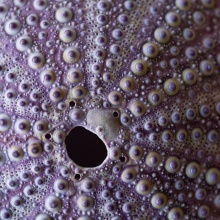The Biological and Natural History Collections
The diversity of living things (biodiversity) can best be conveyed through visualization and comparison. Field trips and field exercises (in situ) play a major role, but collections (ex situ) with well-selected illustrative material reach even more students in teaching and can bring the diversity of life from the top of the Alps to the South Seas directly into the lab room.
The biological-natural history collections at the Institute of Biomaterials and Biomolecular Systems are therefore primarily set up as teaching and course collections. They mainly include botanical and zoological objects (dry or wet preserved) as well as microscopic preparations and series of preparations. These illustrative objects from nature are supplemented by instructive plastic models.
Live cultures of unicellular organisms, microscopic algae, and some demonstration plants are also available for the courses. For connoisseurs and research purposes only, historical herbal books are also well kept in the library.
The biological and natural history collections are used, among other things, to illustrate systematic relationships in the animal and plant kingdoms, but also to show special functional morphologies, technically and economically useful properties, and to explain characteristics that are important for identifying and naming organisms.
The botanical and zoological collections are used primarily in the courses of study in technical biology, medical technology, food chemistry, and environmental engineering.
Contact persons:
Zoological Teaching and Course Collection:
Prof. Dr. Franz Brümmer, Priv.-Doz. Dr. Michael Schweikert
Botanical Teaching and Course Collection:
Prof. Dr. Christina Wege, Prof. Dr. Ulrich Kull (ret.)



